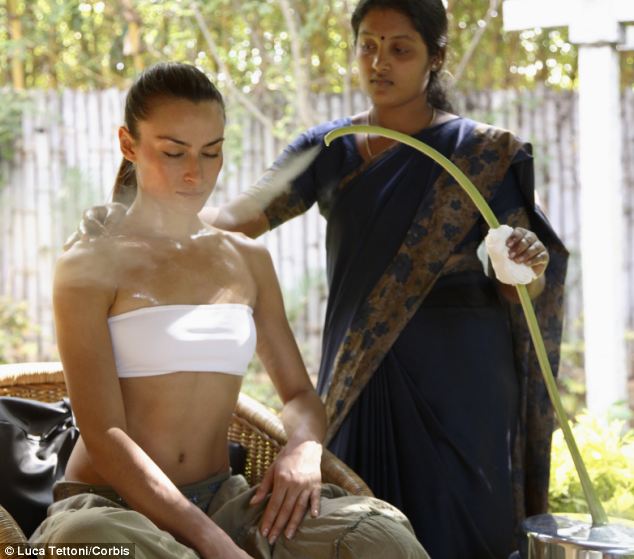
Table of Contents
Nadi Sweda
If you want to know more about Swedana and Nadi sweda, read this article. This treatment has been around for hundreds of years in India and has a wealth of benefits for your body. In this article, we will examine how Nadi sweda is performed and what you can expect. In addition, we’ll go over the procedure’s benefits and what you can expect.
What is Nadi sweda in Ayurveda
Sweda means ‘Fomentation’, and Nadi Swedena is a procedure in which fomentation is induced by warm vapor coming through an hose. This kind of swedana should not be done on whole body parts especially wherever delicate skin is present. Its best suited to be done on joints and muscles. While performing this procedure, the steam should not be kept too near or too far. Too much heat or distance will lead to over-burning and deficit sudation. This treatment should last for thirty to sixty minutes, and should be done for seven to 21 days
Nadi Sweden is a special form of sweda. The vapors are applied to the affected area with the help of a tube. Because it is local, it has a greater therapeutic effect than general steaming. This method of sweda is also considered tubular fomentation, which is better suited for areas of pain. It is one of the 13 types of sweda, or herbal steaming.
Benefits of Swedana in Ayurveda
In Ayurveda, Swedana is a common treatment modality, either an integral part of Panchakarma or a separate treatment. Its relaxing, detoxifying, and purifying effects are widely recognized. Swedana consists of two types, one that is full-body and the other more localized. Swedana is highly effective after a full-body oil massage. For many people, Swedana helps to reduce stress, improve circulation, and rejuvenate skin.
However, for people who are not experiencing these symptoms, swedana can be a powerful treatment for improving immunity.
How Nadi sweda procedure is done
To perform the Nadi Sweda procedure, the patient sits on a stool while the therapist covers him/her with a blanket. The patient then opens his/her mouth and protrudes his tongue. He/she then inhales deeply. The therapist directs the steam therapy on the patient by making longitudinal movements over the joints. Then, the therapist uses a vatahara to hold the nadi.
A naadi sweda therapy procedure involves applying herbal mixtures to the body, mainly herbs. The ayurvedic doctor examines the body before performing the therapy and makes notes about any medical conditions present. The herbs are then prescribed in accordance to the condition and predominance of the doshic element.
The process of Nadi Sweda is a unique form of swedan. It involves passing steam over a body part using a special instrument known as a nadi yantra. The tube is fitted with a valve so that the steam can reach the afflicted area.
The procedure requires two basic ingredients: Vatahara herbs and water. During the swedana, herbs and materials are combined with herbal liquids and inserted into the vessel. The lid is tightened so that steam cannot escape. The tube is then inserted into an orifice in the side of the vessel. The steam is then sprayed on the body or on specific parts. During the procedure, the herbs and materials are blended with the water and herbal liquids.
The Benefits of Nadi sweda
The benefits of Nadi sweda are many, and its application is not limited to treating specific ailments. This ancient Indian practice is incredibly effective in warding off vata vyadhis and is relatively inexpensive. It is also easy to perform, and does not require an enormous amount of manpower. This ancient method is also very effective at enhancing the look and health of the skin.
This method helps relieve pain, reduce fatty deposits and inflammation. This ancient method is still popular in India and other parts of the world, although it has been modified for contemporary use. Nadi sweda is often carried out as part of Panchakarma detoxification, but is also performed separately.
Contra Indication of Nadi Sweda
While Swedana has a number of benefits, it is not for everyone. People with heart disease, anemia, and pregnant women are not advised to undergo swedana. People with bleeding disorders, anemia, or coronavirus should consult with their Ayurvedic doctor before undergoing this treatment. People with high vata levels should avoid swedana if they are pregnant. People with blood disorders, heart conditions, and dizziness should not use swedana.
